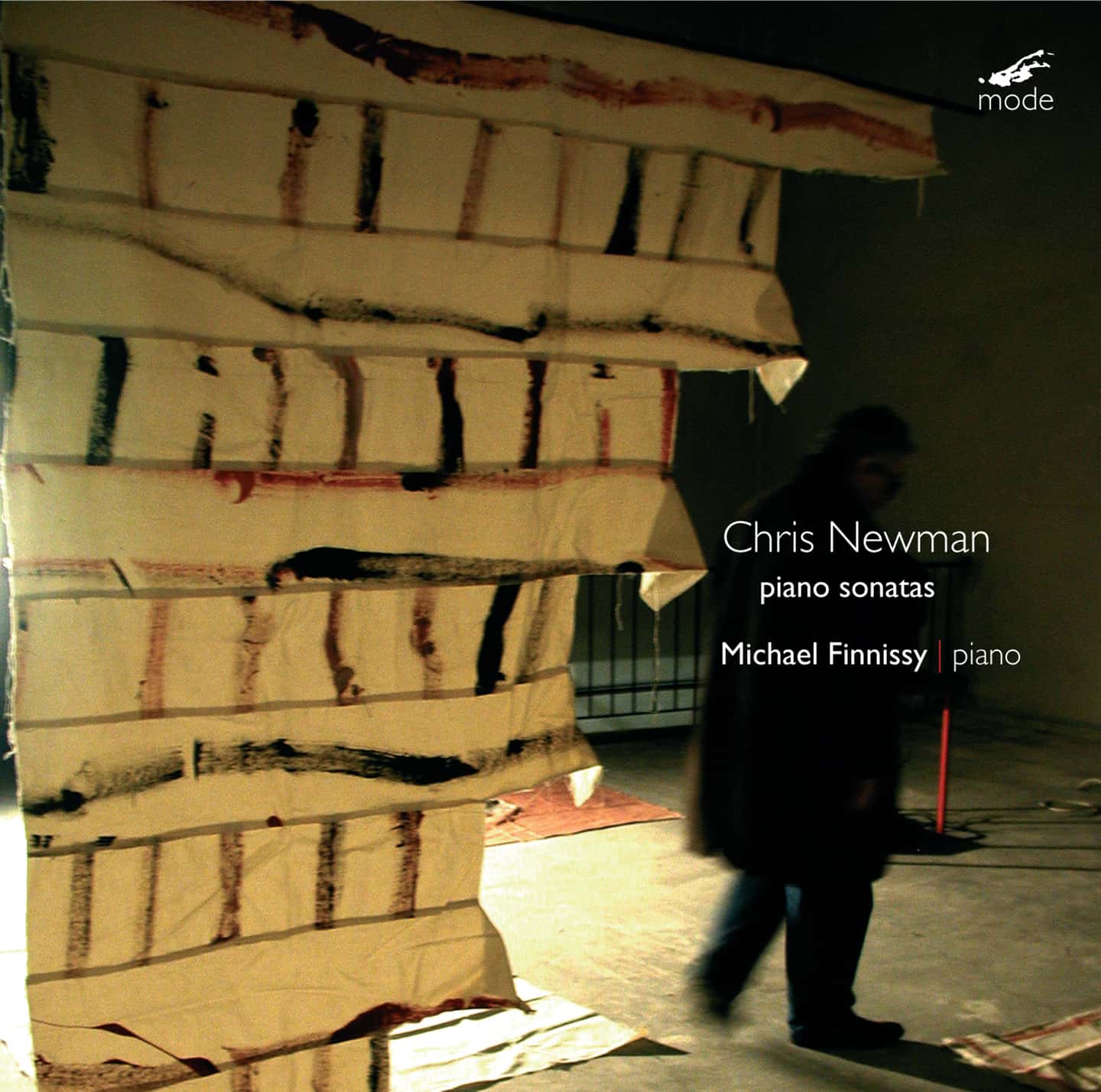Piano Sonatas
Previously released as a compact disc. (viewed Feb. 7, 2013). Michael Finnissy, piano. Recorded in 2006.
Piano Sonata No.1 (1982)
I (3:33)
II “The dinosaurs roamed the planes in herds” (3:21)
III (4:06)
Piano Sonata No.4 (1990)
I Adagio (4:06)
II Andantino (2:53)
III Adagio (5:29)
Piano Sonata No.6 (1997) (10:27, 13:16)
Piano Sonata No.10 (2004) (24:42)
first recordings
Michael Finnissy, piano
Chris Newman is a contemporary composer, painter, author and performance artist living in Berlin. This is the first recording of Newman’s Piano Sonatas, a large and important aspect to his work.
The renowned British piano virtuoso and composer Michael Finnissy performs the four sonatas here. Newman and Finnissy have been collaborators for over a quarter century, ensuring definitive performances.
Composer supervised recordings.
Liner notes by the composer and Michael Finnissy.
From 1976-79, Chris Newman (b.1958 in London) studied music at King’s College London, receiving a Bachelor of Music. He moved to Cologne, Germany, in 1980 to study with Mauricio Kagel (New Music, Theatre/Video) at the Hochschule für Musik Köln. First public performance singing his own songs in 1982. He founded the chamber-punk rock band Janet Smith in 1983; and met Morton Feldman in 1984. First concerts and video showings: Institute of Contemporary Arts, London; Theater am Turm, Frankfurt; Kölnischer Kunstverein, Cologne; Cooper Union, New York. Started to paint in 1989. Since the beginning of the ’80s Newman’s compositions have been performed at concerts and festivals and recorded for radio productions (including orchestral commissions). He has published books of poetry and prose and issued a number of CDs. From 2001 to 2002 he was professor at the Academy of Fine Arts in Stuttgart.
Michael Finnissy has this to say about Chris Newman’s Sonatas: “Newman’s music takes on more of the world than music usually does. It’s also a lot more raw and loose-limbed than most new music is. An Art that seems lived at first-hand…an energy and intensity that is more than merely sound. Chris loves composers like Machaut, Schubert and Mussorgsky – and it’s plain enough to hear them in his music…the titles (Sonatas, and there are Symphonies and String Quartets too) suggest the presence of abstract thought, and Newman works caringly, adroitly and with precision and detail. These pieces do not happen by accident. There is a Newman sound to be ‘achieved’ on the piano: very evenly balanced voicing between the hands, somewhat hard-edged – on the whole reaching for each note as if it were virtually unpremeditated and unexpected.”
Reviews
Chris Newman
Piano Sonatas Nos. 1, 4, 6, 10
Mode 201
Chris Newman was born in London in 1958 and now lives and works in Berlin, where his activities include painting, writing (poetry and prose), installation and performance art. According to the potted biography in the liners, translating the poetry of Mandelstam and Khlebnikov was “an experience that proved important for his later work”, though the names that are more likely to spring to mind on listening to these piano sonatas are Clarence Barlow, Misha Mengelberg and maybe even John White (a reminder that a decent release of some more of White’s piano sonatas – how many are there now, 131? – is long overdue). “I was using conventional tonality literally but in a non-conventional way,” writes Newman of his first Sonata (1982), “using historical styles in a non-historical way, putting them to the forefront – preclassical / Janacek / Ives / homemade Beethoven.” A few years ago, this stuff would have been described as “postmodern”, but since postmodernism has now been with us longer than modernism and the term has been bludgeoned into meaninglessness through overuse, maybe we should find some kind of substitute, not that I can think of any. Newman repositions the left and right hand parts of a CPE Bach sonata in his Sonata No. 4 (1990) (“a way of fucking up the chronology to put it into a kind of solid-state with itself”), combines material from his own Third Symphony with Beethoven’s Op. 90 (Sonata No.6, 1997) and incorporates rhythms from Varèse’s Amériques and pitches from Schubert’s Winterreise (Sonata No. 10, 2004) not as exercises in “quotation or cultural reference [..] but [because] they provide the best material for the job, i.e. to build models for existential phenomena.” Fair enough, but whether you call it quotation or not, taking your musical raw material from a repertoire people are so familiar with is a risky business. There’s always an element of irony involved, on the part of both composer and listener. We find Barlow and Mengelberg’s “wrong” notes funny because we know from experience what the “right” ones should be, but Newman’s non-resolving chord sequences, disappearing trills and sudden stops, aided and abetted by Michael Finnissy’s splendidly deadpan reading (someone should persuade him to record some Satie) soon lose their power to amuse – not that amusing the listener is what he purposefully set out to do – and listener fatigue soon sets in. This is a disc to dip into, a sonata at a time, rather than play from beginning to end.
— Dan Warburton, www.paristransatlantic.com/, Autumn 2008

